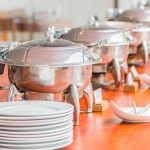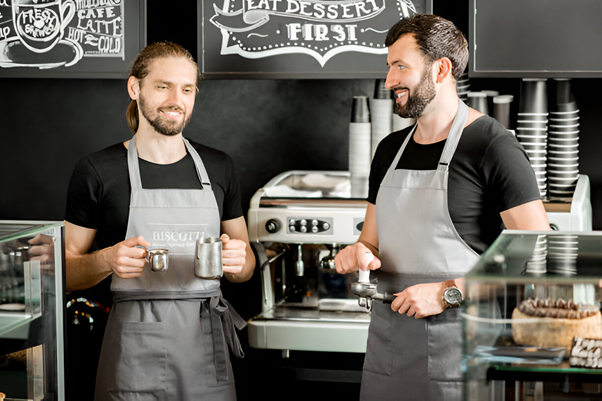Many people have a preferred roast of coffee, whether it is light or dark. Both provide a robust coffee experience, but they vary in terms of flavor profiles, caffeine concentration, and health advantages. This post examines various variations to help you decide which roast best meets your preferences.
One of the most well-known coffee shops in the city is coffee shop Detroit MI, so if you enjoy coffee, you should go there.
Common Misconceptions
Because dark roasts appear stronger, taste bolder, and smell more pungent than light roasts, you might conclude, like most people, that they contain more caffeine. But this is a widespread misunderstanding. Actually, depending on how you measure your coffee, light roasts frequently contain a little bit more caffeine than dark roasts.
Because it is a stable molecule, caffeine does not degrade when it is roasted. The mass and size of the beans change while they roast; dark roasts become lighter and smaller than light roasts because they expand and lose more moisture.
It is crucial to think about how you measure your coffee when it comes to measurement. Light roasts usually contain more caffeine because you’re using more beans when you measure by weight (grams or ounces).
However, because the beans are more compact, dark roasts will have more caffeine if you measure by volume (scoops or tablespoons). It’s a difficult yet crucial distinction to remember!
What Actually Affects Caffeine Levels
The amount of caffeine in your coffee is not primarily determined by the roast level. Other important elements are more important:
Bean Type:
- Arabica Beans: More common, flavorful, and expensive, but contain less caffeine (1-1.5% by weight).
- Robusta Beans: More bitter, resistant to pests, and cheaper, but contain higher caffeine content (2-2.5% by weight).
Brewing Method:
Caffeine is extracted at different rates by different brewing techniques.
- Espresso: Due to high pressure, finely crushed beans, and a brief brewing period, it has more caffeine per ounce.
- Drip Coffee: Generally, has less caffeine due to a slower brewing process with lower pressure and temperature.
Serving Size:
Your caffeine consumption is strongly impacted by how much coffee you consume.
Around 95 mg of caffeine is found in an 8-ounce cup of brewed coffee, however bigger cups (12 oz, 16 oz) or several doses enhance your daily caffeine intake.
Comparison between Light, Medium and Dark Roast
Light Roast
- Roasted briefly at low temperature, reaching the first crack.
- Beans are light brown, with no oil on the surface.
- Flavor: Mild, high acidity, with floral or fruity notes.
- Preserves original bean characteristics.
Medium Roast
- Roasted longer at a higher temperature, reaching the second crack.
- Beans are medium brown, with some oil on the surface.
- Flavor: Balanced, medium acidity and sweetness.
- Caramelized sugars add complexity and body.
Dark Roast
- Roasted the longest at high temperature, beans dark brown or black.
- Beans have a lot of oil on the surface.
- Flavor: smokey, charred flavors, bitterness, and a strong, low acidity.
- Loses most of the original bean characteristics.

Ultimately, the decision is based on your individual preferences for acidity, bitterness, and overall coffee experience, even though light and dark roasts have different flavors and caffeine contents. Enjoy experimenting with different roasts!

 Why Frozen Ready-to-Eat Meals Are Changing Modern Dining
Why Frozen Ready-to-Eat Meals Are Changing Modern Dining  Where can you get a verified online doctor certificate?
Where can you get a verified online doctor certificate?  Essential Guide to Selecting the Perfect Plastic Cake Box
Essential Guide to Selecting the Perfect Plastic Cake Box  Are Chicken Wraps and Sandwiches Worth the Hype?
Are Chicken Wraps and Sandwiches Worth the Hype?  Empowering Home Cooks: Taking Your Everyday Dishes from Ordinary to Extraordinary
Empowering Home Cooks: Taking Your Everyday Dishes from Ordinary to Extraordinary  Unique Flavours That Stay Forever, Alive in Every Thai Kitchen
Unique Flavours That Stay Forever, Alive in Every Thai Kitchen  Why Halal Bento Catering Is Becoming Popular for Events in Singapore
Why Halal Bento Catering Is Becoming Popular for Events in Singapore  Elevating Social Gatherings With Afternoon Tea Caterers in Singapore
Elevating Social Gatherings With Afternoon Tea Caterers in Singapore  Popular Cake Shops in Singapore: The Dos and Don’ts You Should Know
Popular Cake Shops in Singapore: The Dos and Don’ts You Should Know 


